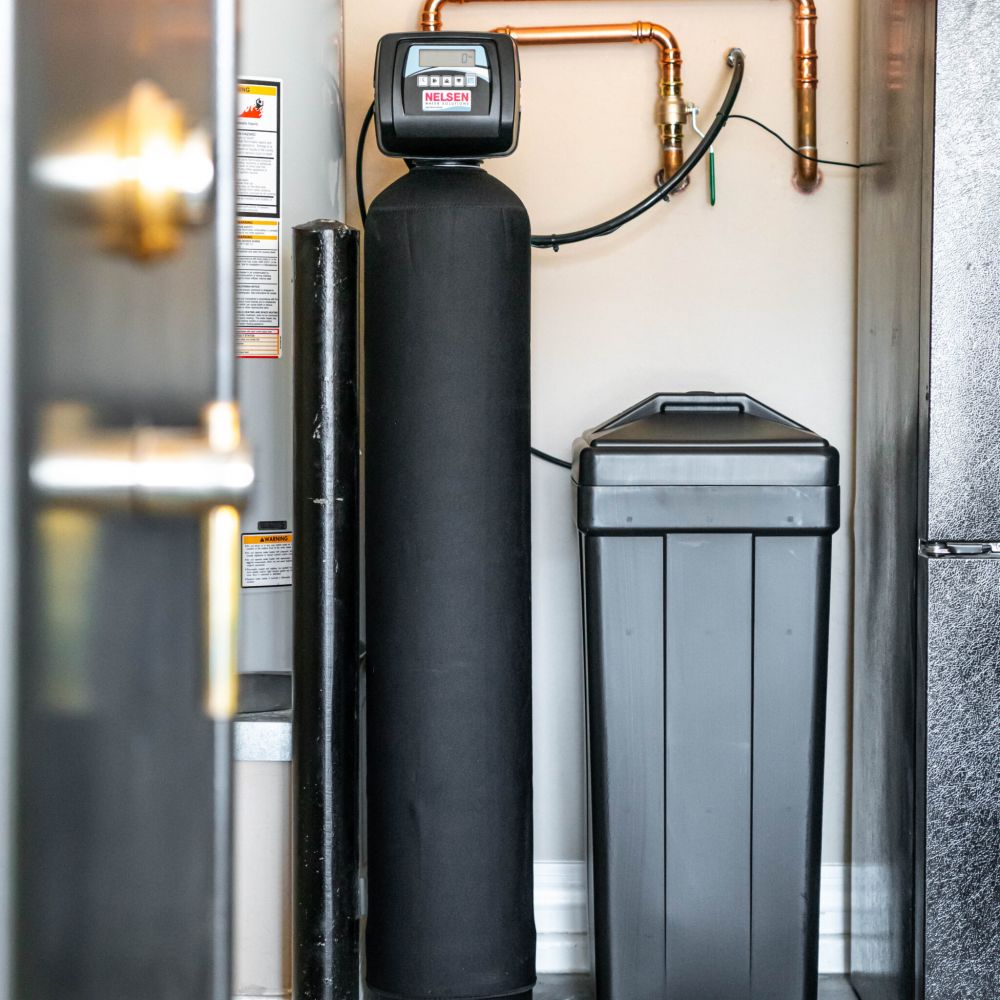
Water is one of the most essential resources in any home, but not all water is created equal. In many regions, homeowners deal with “hard water,” which contains high levels of calcium and magnesium. While not harmful to health, hard water can wreak havoc on plumbing, appliances, and even skin and hair. That’s where a water softener comes in—a system that removes those minerals and provides soft, more manageable water. Installing a water softener might seem intimidating at first, but with the right tools, knowledge, and preparation, it can be a straightforward and rewarding process. This article breaks down the water softener installation process in detail, covering everything from choosing the right location to post-installation maintenance.
Table of Contents
ToggleUnderstanding the Basics
Before diving into the installation process, it’s important to understand how a water softener works. The most common type of water softener is an ion exchange system. It uses a tank filled with resin beads that are charged with sodium ions. As hard water flows through the resin, calcium and magnesium ions swap places with sodium ions, effectively removing hardness from the water. Periodically, the resin must be recharged or “regenerated” using a brine solution, which flushes the collected minerals away.
Preparing for Installation
1. Choose the Right Unit
Not all water softeners are created equal. Depending on the size of your household and the hardness level of your water, you’ll need to choose a system with the appropriate capacity. Water hardness is measured in grains per gallon (GPG), and this figure—along with daily water usage—helps determine the size of your softener.
2. Pick an Ideal Location
A water softener should be installed as close as possible to where water enters the home. This is typically near the main water shutoff valve, often in a basement, garage, or utility closet. The location should meet the following criteria:
-
Access to a drain (for regeneration cycles)
-
Electrical outlet (for power)
-
Relatively level surface
-
Protection from freezing temperatures
Required Tools and Materials
To perform a standard installation, you’ll need the following tools and materials:
-
Pipe cutter
-
Wrenches
-
Plumber’s tape
-
Flexible tubing or piping (copper, PVC, or PEX depending on your plumbing)
-
Compression fittings or adapters
-
Hose clamps
-
Bucket and towels (for cleanup)
-
Drain hose
Some systems come with installation kits, which can simplify the process.
Step-by-Step Installation Guide
Step 1: Shut Off the Water Supply
Begin by turning off the main water supply to the house. Open faucets on the lowest level of your home to drain residual water and relieve pressure in the lines. This will make cutting into the pipe cleaner and safer.
Step 2: Cut into the Main Water Line
Using a pipe cutter, carefully cut into the main water supply line where you want to install the softener. Make sure the pipe is dry before proceeding. Prepare the cut ends for the fittings using sandpaper or a deburring tool.
Step 3: Install Bypass Valve
Most water softeners come with a bypass valve, which allows you to divert water around the softener if it needs maintenance. Install the bypass valve onto the softener unit according to the manufacturer’s instructions. Make sure the connections are tight and secure.
Step 4: Connect to the Water Supply
Attach the inlet and outlet ports of the softener to the plumbing lines using flexible tubing or appropriate fittings. The inlet should connect to the line carrying untreated water into the house, and the outlet should carry softened water to the rest of the home. Double-check the flow direction marked on the unit.
Step 5: Connect the Drain Line
Water softeners need a drain for the brine discharge. Connect the drain hose to the softener and route it to an appropriate drain—such as a floor drain, utility sink, or standpipe. Secure the hose with clamps and ensure there’s an air gap to prevent backflow contamination.
Step 6: Connect the Overflow Line (if applicable)
If your brine tank has an overflow fitting, connect a secondary drain hose to handle excess water. This is a critical safety step to prevent water damage in case the brine tank malfunctions.
Step 7: Plug in the Unit
Connect the unit to a power source using a nearby GFCI outlet. Follow the instructions to program the control head, setting the time, regeneration cycle, and water hardness level. Many modern systems offer digital controls and intuitive setup.
Step 8: Start Up and Check for Leaks
Slowly turn on the water supply and allow the softener to fill with water. Open valves one at a time and watch for leaks. If everything looks good, plug in the unit and start a manual regeneration cycle. Monitor the drain line to ensure proper discharge and watch for consistent operation.
Testing and Adjustments
Once the softener has completed its first regeneration cycle, it’s time to test your water. Use a test strip or a water hardness test kit to measure the level of hardness. If necessary, adjust the system settings accordingly.
Keep an eye on the brine tank. Make sure the salt level is adequate, and refill it when necessary. Avoid overfilling, which can lead to salt bridging—a condition that prevents proper regeneration.
Maintenance Tips
Proper maintenance will keep your water softener running efficiently for years. Here are a few key practices:
-
Check Salt Levels: Refill with the appropriate type of salt when levels drop below half.
-
Clean the Brine Tank: Once or twice a year, flush the tank to remove sediment or buildup.
-
Inspect for Leaks: Regularly check for moisture around fittings, valves, and hoses.
-
Sanitize Periodically: Some manufacturers recommend occasional sanitizing of the system to prevent bacterial growth.
-
Use Resin Cleaner: If you have high iron content, use a resin cleaner to prevent fouling of the beads.
When to Call a Professional
While many homeowners can handle water softener installation themselves, certain situations call for professional help. If your plumbing is outdated, if you’re uncomfortable cutting into pipes, or if local regulations require permits, hiring a licensed plumber is a smart choice. Additionally, professional installation may be required to maintain warranty coverage on some systems.
Final Thoughts
Installing a water softener can dramatically improve the quality of life in your home. From cleaner dishes to softer laundry and longer-lasting appliances, the benefits are substantial. Although installation involves plumbing, electrical, and a bit of elbow grease, the steps are manageable with patience and preparation. Whether you choose to install it yourself or hire a professional, investing in a water softener is a move toward more efficient and comfortable home living. With proper maintenance, your water softener will provide years of reliable service, making it one of the most worthwhile upgrades for households dealing with hard water.
About the Author
admin
Administrator
Welcome to our guest post platform — your destination for insightful, high-quality content from contributors around the world. I'm Qasim Malik, the admin behind this initiative, committed to building a diverse space where voices from various industries, interests, and backgrounds come together. Our mission is simple: to empower writers, bloggers, and thought leaders by giving them a platform to share their expertise, opinions, and stories. Whether you're a seasoned expert or a passionate beginner, our site welcomes you to publish and connect with a wider audience.



